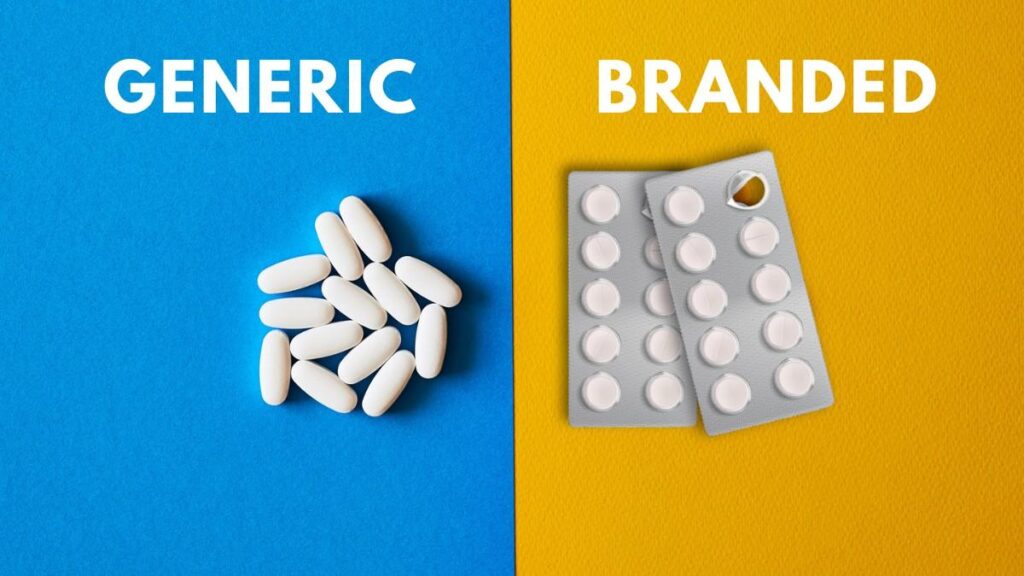Are generic medicines as effective as branded ones? Doctor explains with detailed comparison

By Col (Dr) Surendra Ramamurthy (Retd.) MBBS, MD, DNB, FICS
Introduction
The recent decision by the Indian Government to make it mandatory for doctors to prescribe generic medicines has stirred a substantive debate within the medical community and beyond. This monumental shift, backed by non-compliance penalties enforced by the National Medical Commission, presents a momentous change. To fully understand the implications, we need to closely examine the characteristics and considerations surrounding branded and generic medications.
Branded Medications: The Ins and Outs
Branded medications are often the pioneers in healthcare, introducing new treatments into the market. When a pharmaceutical company develops a new drug, it’s a long and arduous process that involves heavy investment in research, development, clinical trials, and marketing. For the effort and risk taken, the company receives patent protection, usually for a period of about 20 years. This patent restricts other companies from producing and marketing identical versions of the drug, allowing the original manufacturer a period of market exclusivity to recoup its investment.
However, the costs don’t end there. The manufacturers invest further in advertising and promotional campaigns to build brand awareness and consumer trust, all of which adds to the retail price. Thus, while these medications often signify innovation and bring about new treatment paradigms, they usually come with a hefty price tag.
Despite the high costs, one of the merits of branded medications lies in their stringent quality control measures. Regulatory authorities meticulously evaluate these drugs to ensure they meet high standards for safety, efficacy, and consistency, thereby justifying the public’s trust.
Generic Medications: The Affordable Alternative
Enter generic medications—often seen as the more affordable counterparts to branded drugs. These medications contain the same active ingredients and must meet the same rigorous quality standards. Unlike branded manufacturers, however, generic companies do not have to bear the costs of discovering a new drug or proving its efficacy through clinical trials. Their role begins once the patent for the branded medication expires, allowing them to produce identical versions, which are usually sold at a much lower price point.
But affordability is not the only driving force behind the appeal of generics. Given that they must adhere to the same quality standards as branded medications, they offer an economically viable option without compromising safety and effectiveness. This aspect becomes particularly important in a country like India, where healthcare is often an out-of-pocket expenditure for many.
The following is a summary of the comparison between branded and generic medication:
| Attribute | Branded Medications | Generic Medications |
| Development | Extensive R&D, clinical trials, and marketing | Usually no original R&D; bioequivalence studies are done |
| Patent | 20-year patent protection | Produced after patent expiration |
| Price | Generally higher due to development costs | Significantly cheaper as R&D costs are low or non-existent |
| Quality Control | Rigorous, set by regulatory authorities | Must meet the same regulatory standards as branded medicines |
| Name and Identity | Unique brand name protected by trademark law | Sold under generic name; no brand names |
| Advertising | Extensive advertising and promotional campaigns | Minimal to no advertising |
| Market Exclusivity | Exclusive market rights during patent protection | Multiple manufacturers can produce, increasing competition |
| Consumer Perception | Often viewed as more trustworthy due to brand recognition | May be viewed as less effective due to lower price, despite bioequivalence |
| Accessibility | Limited to those who can afford higher costs | Wider accessibility due to lower price |
The Indian Context: Healthcare Affordability and Quality
In India, healthcare affordability is not just a social issue but a critical economic and public health concern. A significant proportion of the population bears healthcare expenses out of pocket, often leading to financial strain, particularly in cases involving severe illnesses or chronic conditions. In this landscape, rising healthcare costs pose a significant barrier, affecting not just individual well-being but also that of families and entire communities.
The Indian government has been actively engaged in combating these challenges through various policy measures and initiatives. One notable program is the Jan Aushadhi Scheme, designed to promote the use of generic medicines across government healthcare facilities. This initiative aims to make essential medications available at a fraction of the cost, thereby significantly reducing the financial burden on the common man. In addition, regulations on drug pricing have been implemented to control the cost of both branded and generic medications, further mitigating the economic strain on consumers.
However, the issue of affordability does not exist in isolation. Despite India’s global reputation for exporting high-quality generic drugs, there are glaring disparities in access to affordable medicines within the country. These disparities are not merely a matter of cost but are influenced by a variety of factors such as distribution challenges, regulatory hurdles, and public awareness. For example, the lack of a robust distribution network can lead to availability issues, particularly in rural areas. Similarly, regulatory complications can slow down the approval process for new generic drugs, affecting their market availability.
But the challenges do not end there. Striking a balance between affordability and quality is a complex task that involves multiple stakeholders including the government, pharmaceutical companies, healthcare providers, and even non-governmental organizations. The quality, safety, and efficacy of generic medications are as crucial as their cost. Any lapse in quality can have serious repercussions, leading to poor health outcomes and, in turn, further increasing healthcare expenses in the long run. Addressing these issues requires a comprehensive, multi-faceted approach involving reforms in healthcare infrastructure, regulatory frameworks, and public awareness campaigns.
Conclusion: Branded or Generic Medicines?
In an era where medical advancements are taking leaps and bounds, the challenge often boils down to ensuring that these advancements are accessible and affordable to the widest possible audience. Branded and generic medications each have their unique roles in fulfilling this endeavor. Branded medications are the vanguards of medical innovation, pioneering new treatments for an array of conditions. However, their high costs—often a result of intensive research and development—can put them out of reach for many.
On the other hand, generic medicines offer a more budget-friendly alternative without compromising on quality or efficacy, given that they are held to the same regulatory standards as their branded counterparts. The growing interest in generic medicines, propelled by their cost-effectiveness, represents a viable strategy for making healthcare more affordable and accessible, especially in low- and middle-income countries.
Ultimately, the choice between branded and generic medications isn’t a binary one; it depends on an array of factors such as individual health needs, safety considerations, and financial situation. The key lies in a multifaceted approach that involves collaboration among governments, pharmaceutical companies, healthcare providers, and non-governmental organizations. It’s not merely about making medications affordable; it’s about ensuring that quality healthcare is within reach for everyone, everywhere.
Consulting with a healthcare provider remains critical for making informed decisions about medication, whether branded or generic. As healthcare stakeholders, it’s our collective responsibility to have a nuanced understanding of these options, to push for informed policies, and to strive for a future where quality healthcare is not just a privilege for the few, but a right for all.
About the Author
Col (Dr) Surendra Ramamurthy is an Indian Armed Forces Veteran with over three decades of service as a Senior Gynecologist & Obstetrician. Post-retirement, he extended his expertise as a Senior Consultant in various specialized healthcare settings. Passionate about medical education, he has served as an Associate Professor at AIMST University in Malaysia.
Dr. Ramamurthy made a significant career transition into HealthCare Technology, working with industry leaders like OHUM Healthcare Technologies and Clinivantage Healthcare Technologies. He was last a Co-Founder, Chief Medical Director, and Head of Medical Board at Intelli Fettle Technologies.
Currently, he holds the position of Chief Medical Officer at Akos MD & mChemist.
Specialties: Consultant Gynecologist, Associate Professor, Clinical Transformation Specialist, Chief Clinical Officer, Senior Healthcare IT Consultant, Chief Medical Director, Head of Medical Board, and Digital Health.







